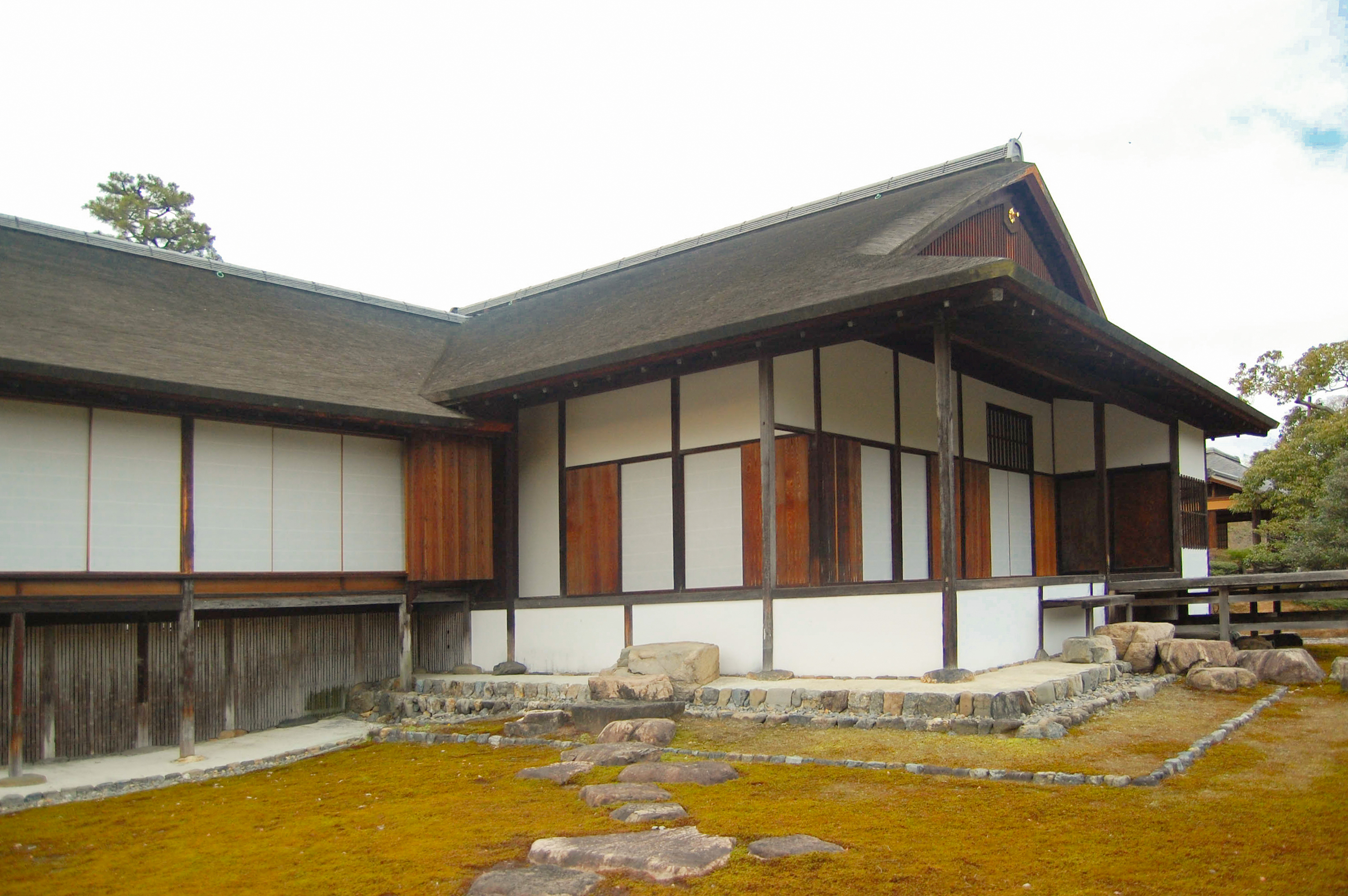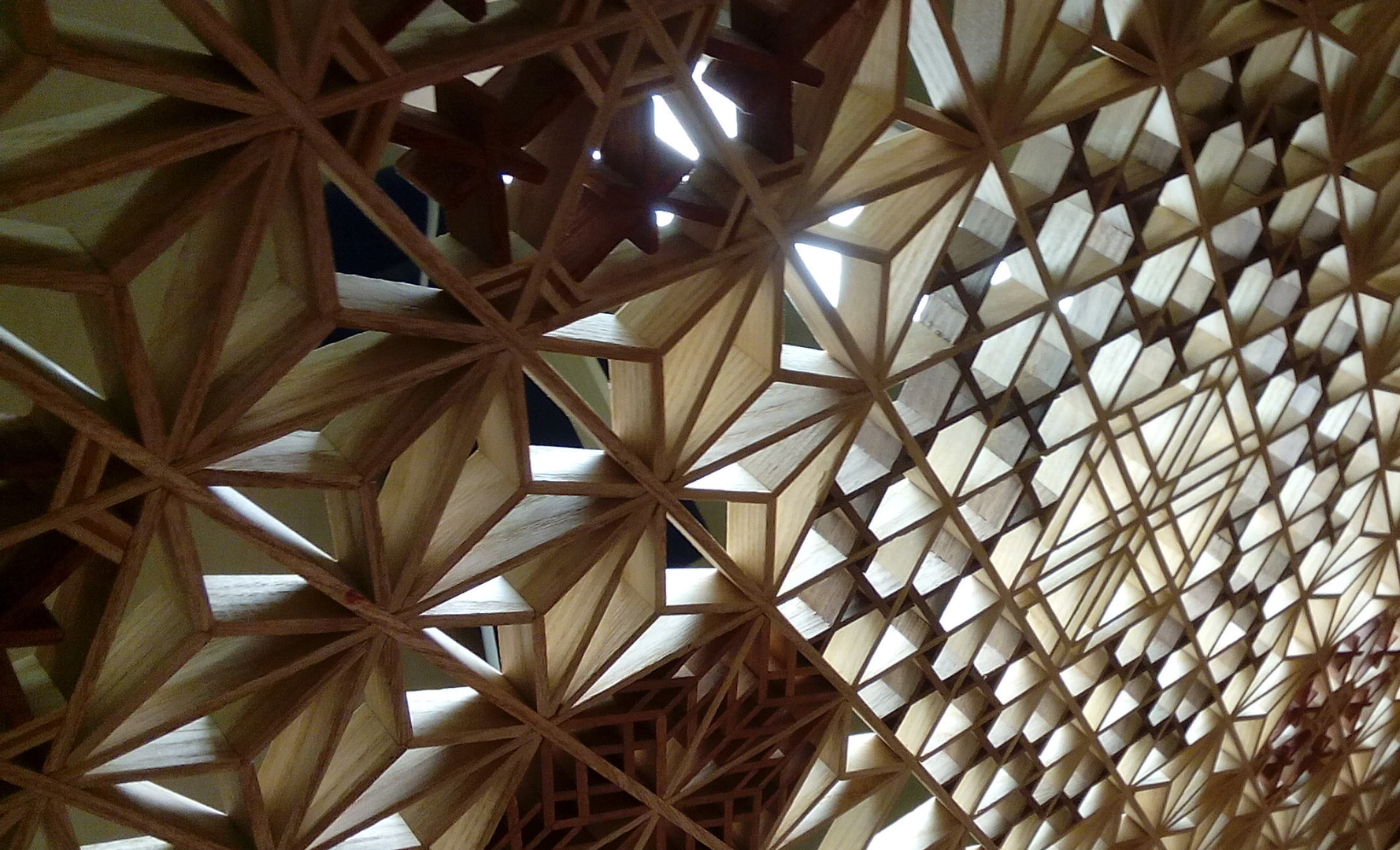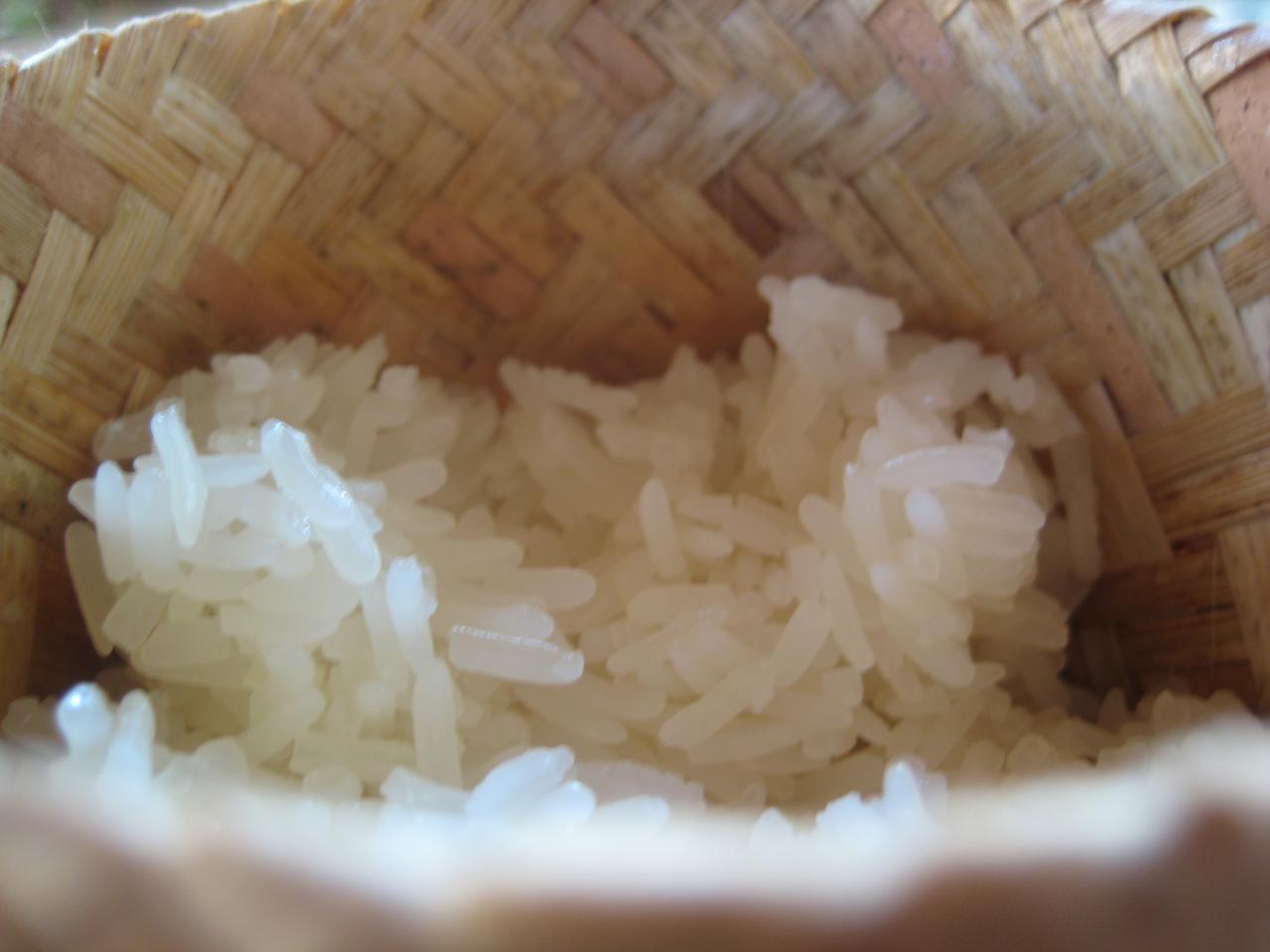|
Shoji
A is a door, window or room divider used in traditional Japanese architecture, consisting of translucent (or transparent) sheets on a lattice frame. Where light transmission is not needed, the similar but opaque ''fusuma'' is used (oshiire/closet doors, for instance). Shoji usually slide, but may occasionally be hung or hinged, especially in more rustic styles. Shoji are very lightweight, so they are easily slid aside, or taken off their tracks and stored in a closet, opening the room to other rooms or the outside. Fully traditional buildings may have only one large room, under a roof supported by a post-and-lintel frame, with few or no permanent interior or exterior walls; the space is flexibly subdivided as needed by the removable sliding wall panels. The posts are generally placed one ''tatami''-length (about 2 m or 6 ft) apart, and the shoji slide in two parallel wood-groove tracks between them. In modern construction, the shoji often do not form the exterior ... [...More Info...] [...Related Items...] OR: [Wikipedia] [Google] [Baidu] |
Japanese Architecture
has been typified by wooden structures, elevated slightly off the ground, with tiled or thatched roofs. Sliding doors ('' fusuma'') and other traditional partitions were used in place of walls, allowing the internal configuration of a space to be customized for different occasions. People usually sat on cushions or otherwise on the floor, traditionally; chairs and high tables were not widely used until the 20th century. Since the 19th century, however, Japan has incorporated much of Western, modern, and post-modern architecture into construction and design, and is today a leader in cutting-edge architectural design and technology. The earliest Japanese architecture was seen in prehistoric times in simple pit-houses and stores adapted to the needs of a hunter-gatherer population. Influence from Han dynasty China via Korea saw the introduction of more complex grain stores and ceremonial burial chambers. The introduction of Buddhism in Japan during the sixth century was a c ... [...More Info...] [...Related Items...] OR: [Wikipedia] [Google] [Baidu] |
List Of Partitions Of Traditional Japanese Architecture
Traditional Japanese architecture uses post-and-lintel structures – vertical posts, connected by horizontal beams. Rafters are traditionally the only structural member used in Japanese timber framing that is neither horizontal nor vertical. The rest of the structure is non-load-bearing. While fixed walls are used, a variety of movable partitions are also used to fill the spaces between the pillars. They may be free-standing, hung from lintels, or, especially in later buildings, sliding panels which can readily be removed from their grooves. Their type, number, and position is adjusted according to the weather without and the activities within. They are used to modify the view, light, temperature, humidity, and ventilation, and to divide the interior space.Formal Audience Hall (Shoin) [...More Info...] [...Related Items...] OR: [Wikipedia] [Google] [Baidu] |
Fusuma
In Japanese architecture, are vertical rectangular panels which can slide from side to side to redefine spaces within a room, or act as doors. They typically measure about wide by tall, the same size as a ''tatami'' mat, and are thick. The heights of ''fusuma'' have increased in recent years due to an increase in average height of the Japanese population, and a height is now common. In older constructions, they are as small as high. They consist of a lattice-like wooden understructure covered in cardboard and a layer of paper or cloth on both sides. They typically have a black lacquer border and a round finger catch. Historically, ''fusuma'' were painted, often with scenes from nature such as mountains, forests or animals. Today, many feature plain mulberry paper, or have industrially-printed graphics of fans, autumn leaves, cherry blossom, trees, or geometric graphics. Patterns for children featuring popular characters can also be purchased. Both ''fusuma'' and ''sh ... [...More Info...] [...Related Items...] OR: [Wikipedia] [Google] [Baidu] |
Sukiya-zukuri
is one type of Japanese residential architectural style. ''Suki'' means refined, well cultivated taste and delight in elegant pursuits and refers to enjoyment of the exquisitely performed tea ceremony. The word originally denoted a building in which tea ceremony was done (known as a ''chashitsu'') and was associated with ''ikebana'' flower arranging, and other Japanese traditional arts. It has come to indicate a style of designing public facilities and private homes based on tea house aesthetics. Historically and by tradition, ''sukiya-zukuri'' is characterised by a use of natural materials, especially wood. In contemporary architecture, its formal and spatial concepts are kept alive in modern materials such as steel, glass and concrete. Origins In 1587, Toyotomi Hideyoshi (1536–98) employed the tea master Sen no Rikyū as his advisor on aesthetic matters. In the compound of Hideyoshi's imposing Jurakudai castle in Kyoto Rikyū designed an eighteen mat building known as th ... [...More Info...] [...Related Items...] OR: [Wikipedia] [Google] [Baidu] |
Kumiko
Kumiko (くみこ, クミコ) is a feminine Japanese given name. Possible writings Kumiko can be written using different kanji and can mean: *久美子, "forever, beauty, child" *空見子, "sky, see, child" *公美子, "public, beauty, child" *來未子, "come, not, child" *功美子, "success, beauty child" The name can also be written in hiragana or katakana. People * Kumiko Asō (久美子), a Japanese actress * Kumiko Akiyoshi (久美子), a Japanese actress * Kumiko Ogura (久美子), a Japanese female badminton player * Kumiko Nakano (公美子), a Japanese actress * Kumiko Goto (久美子), a Japanese model, actress and wife of Jean Alesi * Kumiko Takeda (久美子), a Japanese actress and model * Kumiko Hayashi (久美子), a Japanese politician *Kumiko Aihara (久美子), a Japanese politician *Kumiko Nishihara (久美子, born 1965), a Japanese voice actress *Kumiko Watanabe (久美子, born 1965), a Japanese actress and voice actress *Kumiko Nakane (中根久美子), ... [...More Info...] [...Related Items...] OR: [Wikipedia] [Google] [Baidu] |
Kumiko (woodworking)
( ja, ) is a Japanese technique of assembling wooden pieces without the use of nails. Method Thinly slit wooden pieces are grooved, punched and mortised, and then fitted individually using a plane, saw, chisel and other tools to make fine adjustments. The technique was developed in Japan in the Asuka Era (600–700 AD). panels slot together and remain in place through pressure alone, and that pressure is achieved through meticulously calculating, cutting, and arranging interweaving joints. The end result is a complex pattern that is used primarily in the creation of shoji doors and screens. Traditionally, the wood of choice was the hinoki cypress. Patterns The designs for pieces aren't chosen randomly. Many of the nearly 200 patterns used today have been around since the Edo era The or is the period between 1603 and 1867 in the history of Japan, when Japan was under the rule of the Tokugawa shogunate and the country's 300 regional '' daimyo''. Emerging from t ... [...More Info...] [...Related Items...] OR: [Wikipedia] [Google] [Baidu] |
Washitsu
A , meaning "Japanese-style room(s)", and frequently called a "tatami room" in English, is a Japanese room with traditional tatami flooring. also usually have sliding doors (), rather than hinged doors between rooms. They may have and, if the particular room is meant to serve as a reception room for guests, it may have a (alcove for decorative items). Traditionally, most rooms in a Japanese dwelling were in style. However, many modern Japanese houses have only one , which is sometimes used for entertaining guests, and most other rooms are Western-style. Many new construction Japanese apartments have no at all, instead using linoleum or hardwood Hardwood is wood from dicot trees. These are usually found in broad-leaved temperate and tropical forests. In temperate and boreal latitudes they are mostly deciduous, but in tropics and subtropics mostly evergreen. Hardwood (which comes from ... floors. The size of a is measured by the number of tatami mats, using the ... [...More Info...] [...Related Items...] OR: [Wikipedia] [Google] [Baidu] |
Byōbu
are Japanese folding screens made from several joined panels, bearing decorative painting and calligraphy, used to separate interiors and enclose private spaces, among other uses. History are thought to have originated in Han dynasty China and are thought to have been imported to Japan in the 7th or 8th century (Nara period). The oldest surviving produced in Japan, the , produced in the 8th century, is kept in the Shōsōin Treasure Repository. Nara-period retained their original form of a single, free-standing, legged panel. In the 8th century, multi-paneled made their appearance, and were used as furnishings in the imperial court, mainly in important ceremonies. The six-paneled were the most common in the Nara period, and were covered in silk and connected with leather or silk cords. The painting on each panel was framed by a silk brocade, and the panel was bound with a wood frame. By the Heian period (794–1185), particularly by the 9th century, were indis ... [...More Info...] [...Related Items...] OR: [Wikipedia] [Google] [Baidu] |
Inside Of A Tea House In The Higashi Chaya-gai District (Kanazawa) - Panoramio
Inside may refer to: * Insider, a member of any group of people of limited number and generally restricted access Film * ''Inside'' (1996 film), an American television film directed by Arthur Penn and starring Eric Stoltz * ''Inside'' (2002 film), a Canadian prison drama film * ''Inside'' (2006 film), an American thriller film starring Nicholas D'Agosto and Leighton Meester * ''Inside'' (2007 film), originally ''À l'intérieur'', a French horror film directed by Alexandre Bustillo and Julien Maury ** ''Inside'' (2016 film), a 2016 Spanish-American film remake of the 2007 film * ''Inside'' (2011 film), an American social film * ''Inside'' (2012 film), an American horror film * ''Inside'' (2013 film), a Turkish drama film * '' Bo Burnham: Inside'', a 2021 American comedy special * ''Inside'' (2023 film), an upcoming film starring Willem Dafoe Television * "Inside" (''American Horror Story''), an episode of the tenth season of ''American Horror Story'' Music Albums * ' ... [...More Info...] [...Related Items...] OR: [Wikipedia] [Google] [Baidu] |
JAANUS
Japanese Architecture and Art Net Users System, or JAANUS, is an online dictionary of Japanese architecture and art terms compiled by Dr. Mary Neighbour Parent. It contains approximately eight thousand entries. It is searchable in both English and romaji and contains many hyperlinks and illustrations. See also * Japanology Japanese studies ( Japanese: ) or Japan studies (sometimes Japanology in Europe), is a sub-field of area studies or East Asian studies involved in social sciences and humanities research on Japan. It incorporates fields such as the study of Japane ... References External links * Japanese studies Architecture in Japan Japanese art {{Japan-art-stub ... [...More Info...] [...Related Items...] OR: [Wikipedia] [Google] [Baidu] |
Rice Glue
Rice glue ( ja, 続飯, ) is a gel or liquid adhesive made of a smooth mush of well-cooked white rice, diluted to the desired thickness with water. It has been used since antiquity for various arts and crafts; for instance, it is a woodworking and paper glue. When dried, it is transparent. Rice glue is notable for containing no acids which can degrade the materials it holds together. It is still used in modern times to reversibly assemble joints; after it has dried, the glue can be soaked, steamed, or split to re-open the joint; on a small wood joint, the glue is resistant to tens of minutes of water immersion. It is sometimes mixed 1:1 with urushi lacquer to make nori-urushi (Japanese term), which is darker and dries faster than undiluted lacquer, and is used in making lacquerware. Rice glue is frequently used in Japan and in China. See also * Animal glue * Sticky rice mortar * Wheatpaste Wheat paste (also known as flour and water paste, flour paste, or simply paste) ... [...More Info...] [...Related Items...] OR: [Wikipedia] [Google] [Baidu] |







